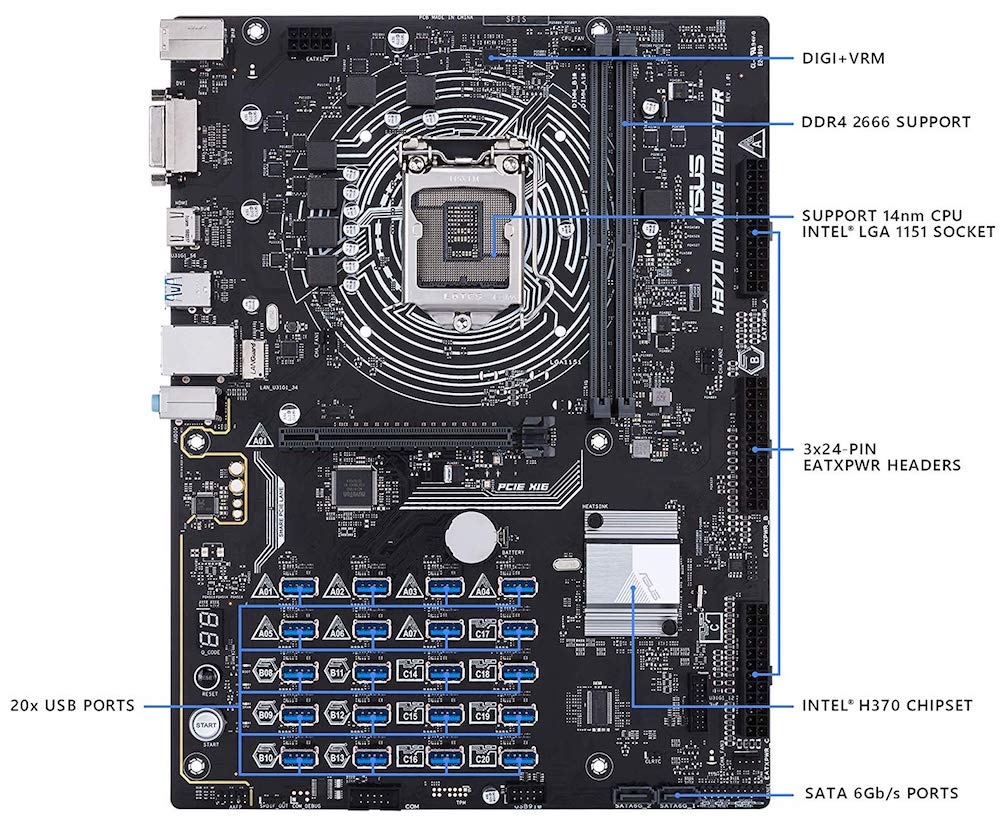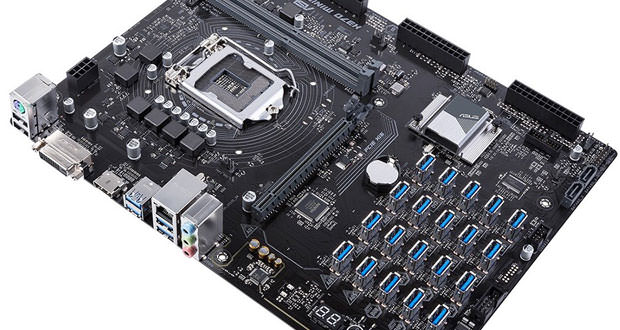From ASUS, Here is the motherboard for 20 GPUs, the dream of all minerals
ASUS has announced its commercial proposal for computers designed for cryptocurrency mining, with a motherboard capable of accommodating up to 20 GPUs.
Cryptocurrency mining has become a trend in the past few months, to the point that there has been an incredible rush to hardware that has led to an unnatural rise in prices. Among the most sought-after, components are the GPUs, precisely because the performance of mining operations is optimally scaled up with the increase in video cards present in the system.
The phenomenon had led not only to an increase in the costs of video cards, but also to a certain scarcity in supplies from the various retailers. Meanwhile, hardware manufacturers have tried to respond to the new demands of the market, and among these ASUS has just taken out a motherboard to say the least atypical.
The ASUS H370 Mining Master is the perfect motherboard for cryptocurrency mining and judging from the name. The Taiwanese do not want to hide the nature of the accessory. After all, at a first glance, we realize that we are not dealing with a motherboard designed for a ” normal ” system.

It is based on the H370 Coffee Lake chipset and integrates the LGA 1151 socket with support for the latest Intel Core i7 processors, including two DIMM slots for up to 32 GB of DDR4-2666 RAM. There is only one PCIe x16 slot, two SATA III and the Intel GbE.
If so far the allocation of ports does not make a miracle, is exaggerated the provision of PCIe over USB ports for any GPU (and not ASIC modules, which are not compatible with the PCIe over USB ports), equal to 20. ASUS also has simplified the method to connect the GPU to the motherboard: traditionally need a PCIe x16 adapter to connect to the video card, a PCIe x1 riser card connected to the motherboard, and a USB cable that connects the two cards.
With the ASUS Mining Master, on the other hand, a pass is passed, and USB ports are vertically integrated on the motherboard, eliminating the need for the PCIe x1 card.
In this way, the whole system is cleaner in the assembly and eliminating additional components, even more reliable and potentially more stable. The company also includes a diagnostic tool to increase the efficiency and simplicity of system management: GPU State Detection scans the system at startup and indicates empty port riser, connected to a GPU that works correctly, or connected to a GPU defective.
The graphical interface allows you to easily detect which GPUs have problems through a code that distinguishes the ports.
Product prices and availability are subject to change. Any price and availablility information displayed on Amazon at the time of purchase will apply to the purchase of any products.

